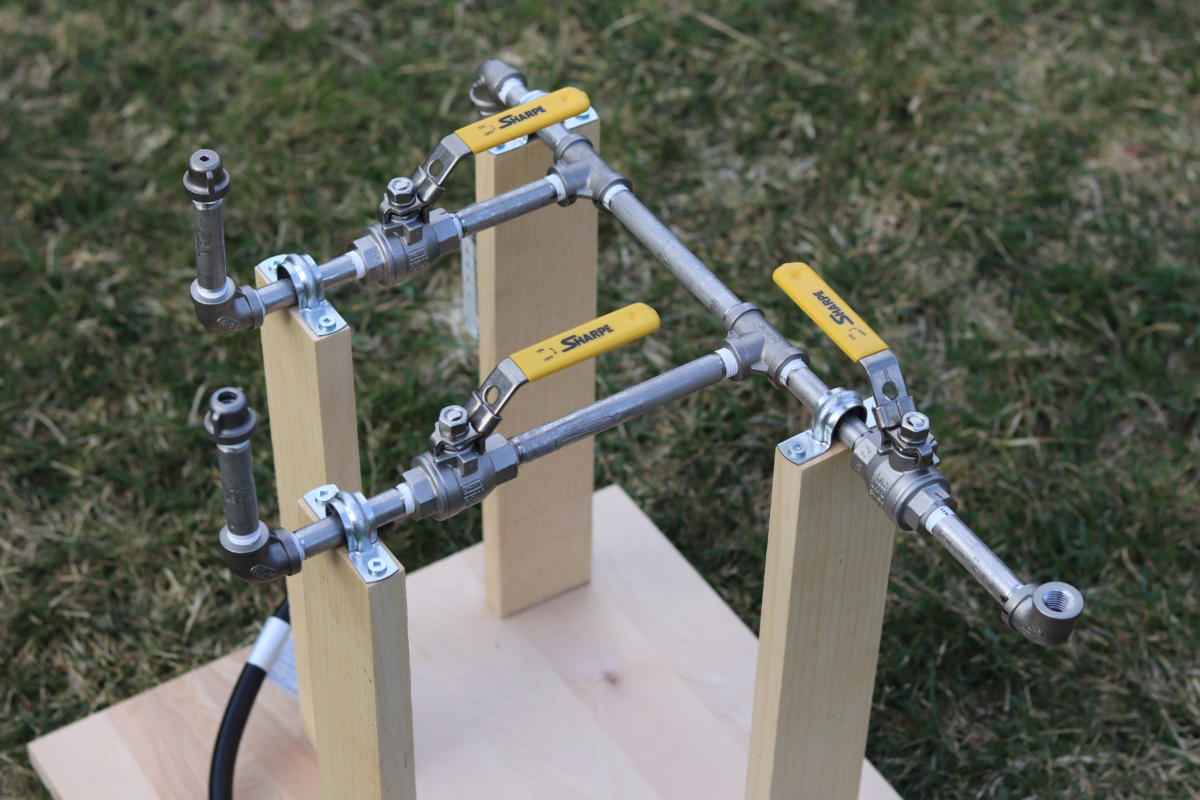As part of our ENGR 499 Capstone project, our team collaborated with ChampionX to develop a field-deployable system for simulating and quantifying gas emissions. This consisted of two main deliverables: a small-scale emissions manifold for controlled leak simulation and QuantX, a software tool for detecting and quantifying gas plumes from optical gas imaging (OGI) camera footage. My primary contribution was the research, design, and implementation of the QuantX software.

Field-deployable manifold for simulating gas leaks
QuantX was developed to support the ChampionX AURA OGI camera by providing a post-processing pipeline for gas plume identification and mass flow estimation. The software processes grayscale infrared video using a multi-stage algorithm that includes image thresholding, background subtraction, optical flow (Gunnar-Farneback), and morphological filtering. These techniques isolate motion within the video and generate annotated footage that highlights detected gas plumes. Users are prompted to input key environmental parameters such as gas type, wind speed, camera distance, which are used in a length-time equalization model to estimate leak rates.

Annotated output footage from QuantX
The development process was iterative. Initial prototypes suffered from false positives and high sensitivity to noise, particularly under variable wind or low-contrast conditions. Through parameter tuning and temporal averaging, we achieved improved detection stability. However, the quantification model produced high error margins due to compounded assumptions and limited calibration data. Errors reached up to 17000%, highlighting the need for future integration of CNN-based estimation or Gaussian plume models.
Despite its limitations, QuantX successfully demonstrates a framework for automated leak detection. This tool, when combined with our emissions manifold, provides a scalable, cost-effective solution for operator training and emissions quantification. Future work may include incorporating real-time feedback, improving model accuracy, and integrating the software directly into the AURA OGI platform.